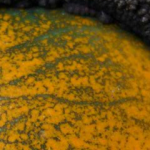enamel
The natural world is rife with leftovers. Over the course of evolution, body parts that no longer benefit their owners eventually waste, away leaving behind shrivelled and useless anatomical remnants. The human tailbone is one such example. Others include the sightless eyes of cavefish that live in total darkness, the tiny spurs on boas and pythons that hint at the legs of their ancestors, and the withered wings of the Galapagos cormorant, an animal that dispensed with flight on an island bereft of land predators.
Animal genomes contain similar remains. Just like organs, genes also waste…
Evolve
Electroformed Copper, Vitreous Enamel, Sterling, Pearls, Lens, Feathers, Steel, Worm
Photo: Courtney Frisse
Last week I featured electroformed copper pendants by Kristina Glick Shank. I also found another outstanding electroformed copper artwork, this one by Kristin Mitsu Shiga. I think it's a wonderful idea to portray a chrysalid, the very symbol of transience, in metal - one of the most permanent materials possible. I am sorry it's titled Evolve - I don't love it when the concept of evolution is conflated with the concept of individual development. But this piece is so interesting…
This is. . .
A. The surface of one of Jupiter's moons
B. Thermophilic archaebacteria in a hot spring
C. The pigmented iris of a Madagascar gecko
D. An electroformed enamel and copper pendant
E. Multicolored lichen at Enchanted Rock, Texas
Answer after the fold!
D* is correct: it is actually an enamel and copper electroformed pendant called "EyeSpy" by artist Kristina Glick Shank.
Shank's series of electroformed pendants impress me with their blend of controlled detail and organic (well, technically, mineral) textures. The electroforming gives an uncontrolled, natural feeling to the pieces…
Our teeth are a mystery. The set we grow during late childhood stays with us throughout our lives, biting and chewing thousands of times a day. They can withstand forces of up to 1,000 newtons and yet, the material that coats them - enamel - is little tougher than glass. How does this extraordinarily brittle substance not shatter into pieces every time we crunch a nut or chomp on an apple?
Herzl Chai from Tel Aviv University found the answer, and it's a surprising one. At a microscopic level, our teeth defend against fractures by developing with cracks already built in. These pre-made…

